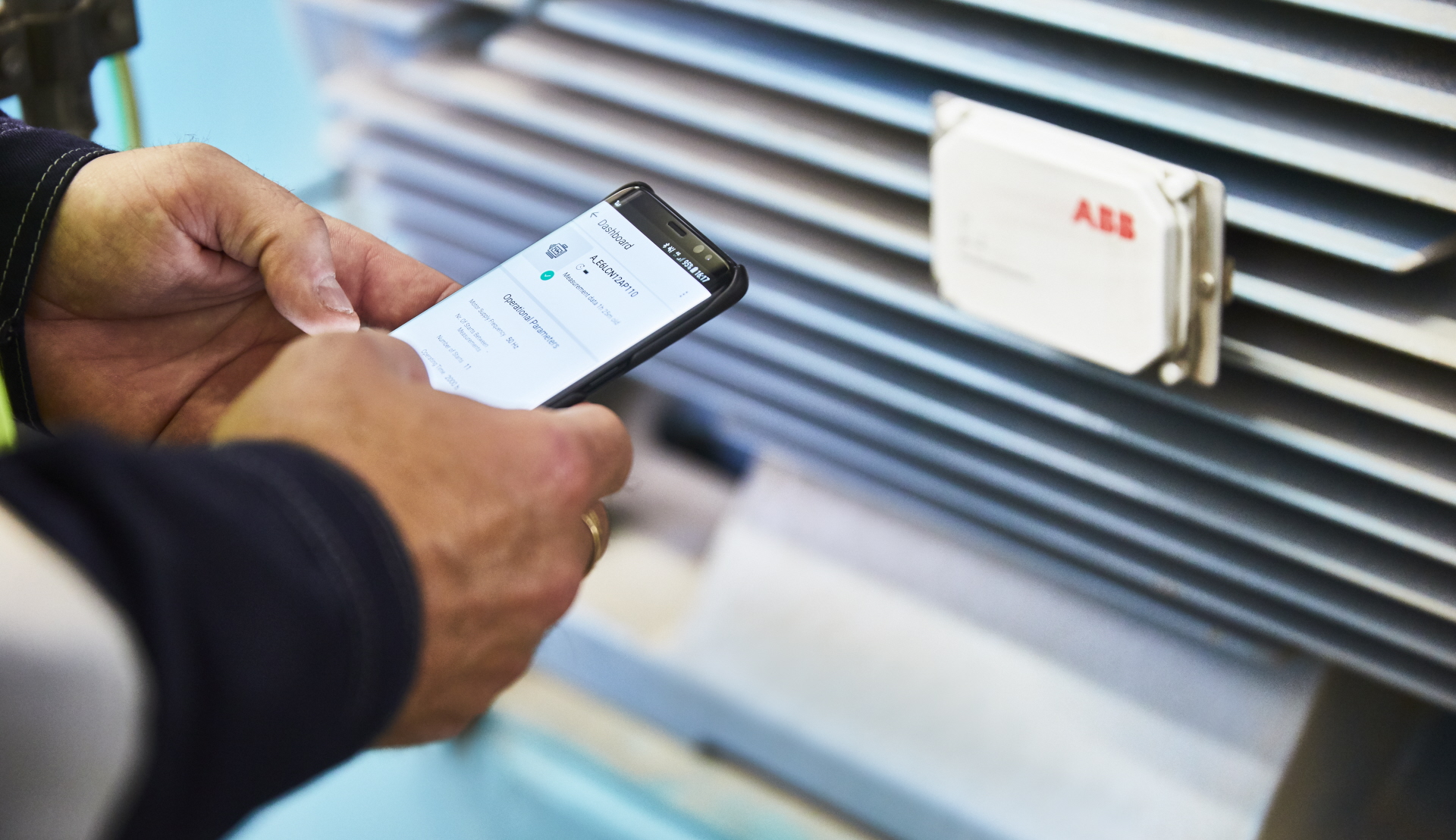Relieving Pressure with Digitalization
The rapid development of real-time sensing and monitoring technologies for improving early leakage and water quality anomaly detection are an effective way to address these challenges as ABB’s Clayton Mead describes:
There is increasing pressure on water utilities to lower their total cost of ownership and high leakage rates. By combining smart monitoring technology with variable speed drives (VSDs) and motors, water utilities can anticipate pump system maintenance needs, thereby moving from reactive to real-time monitoring.

Condition-based monitoring boost remote location insights
In water and wastewater applications, VSDs are deployed for process control such as maintaining constant water pressure (thus avoiding leakage caused by high pressure), avoiding water hammer, or optimised water extraction. VSDs can perform pump cleaning and can control several pumps in a cascade system to optimize pump operations and save energy.
Condition-based monitoring services can work with remotely located pump systems to provide real-time data via the cloud. At the heart of this approach is a new generation of wireless smart sensors – a low-cost, easy-to-install digital solution.
Smart sensors have revolutionised the maintenance logistics of motors by enabling operators to use remote monitoring for early detection of pending problems. Now, maintenance actions can be cost-effectively planned before failure occurs. The result is reduced downtime, eliminating unexpected production stops, optimised maintenance and reduced spare parts stock.
Furthermore, experts can analyse data collected from the smart sensors and turn it into corrective and confident actions to extend equipment lifetime. It’s possible to analyse and decipher the best solution for improving the operation of water and wastewater assets, from a single pump station to an entire water or wastewater treatment facility.

From pumps to motors to VSDs
Smart sensors also turn traditional pumps into smart, wirelessly connected devices. This approach measures vibration and temperature from the surface of the pump and uses it to provide insight into the pump’s condition and performance, including pump speed, vibrations, misalignment, bearing condition and imbalance. In addition, smart sensors attached to the motors connected to the pumps can detect a drop in water flow based on the output power of the motor.
Digitalisation also extends to VSDs, from where data can be uploaded to the cloud via a remote monitoring solution. Data from the VSD, motor and pump can be analysed together, providing insights on the health and performance of the complete powertrain.
While utilities are always monitoring their networks for changes in pipe pressures and flow of water that can indicate problems such as blockages and leakages, sometimes the first warning they receive is when a customer notifies them of a burst water pipe. Digitalisation can trigger the earliest possible warning. The earlier or quicker utilities can prevent treated water being wasted, the higher the savings, not to mention the boost in customer confidence. Non-treated water, also known as wastewater, is a real problem if it leaks into the environment. Utilities can be fined, not to mention the safety hazards for people, property and image of a water utility.
How hard is digitalisation to implement?
While utilities have made great strides in the uptake of digital technology, there is still plenty of scope for improvement. As the technology evolves and smart sensor prices decrease, the opportunities for utilities to gain even greater insights into their networks has sky rocketed.
Ripping out all the existing hardware is probably not the best approach. Utilities need to start with a clear strategic plan to create an all-encompassing digital ecosystem. This can start by dividing the water network into discrete zones and identifying what is needed to address the specific challenges in each. Effectively, it is best to start small by adding to existing technology. In this way, smart sensors are the perfect starting point as they can be placed on a motor, pump, bearings or gearing. They are easy to connect and use, without having to invest in new, expensive systems.

Successful application in Singapore
In the bustling city-state of Singapore, its water utility focuses on one main goal: to make sure that the rapidly growing metropolis – with few natural water sources and limited landmass – has a steady supply of clean water. To add to the challenge, water demand is set to double in the next four decades over its current consumption of over 400 million gallons a day. High operational costs, rising energy usage, and a national workforce shortage compelled Singapore to think beyond convention.
ABB and the Public Utilities Board (PUB), the water utility, conducted a successful pilot, which involved installing smart sensors on the PUB’s motors and pumps. The real-time data obtained via the sensors allowed the utility to reduce troubleshooting time, as well as resources and paperwork.
ABB then installed an integrated solution with 22 smart sensors, remote condition monitoring, and augmented reality glasses (Microsoft HoloLens) to assist with maintenance and training. It also installed six digital powertrains, which integrate sensor and VSD data with cloud-based analytics along the entire chain of plant equipment – from VSDs and motors to pumps and bearings. The condition monitoring portal allows the PUB to configure the powertrains easily and monitor critical health and operating parameters via a single portal. The digital powertrains, in turn, alert the utility to warning signs of failure, which helps reduce maintenance costs.
Looking ahead
A smart city is often described as a ‘system of systems,’ where the Internet of Things (IoT) and analytics converge with traditional infrastructure. These cities use IoT and analytics capabilities to reach operational efficiency and improve service levels, sustainability, and economic vitality. Previously siloed sectors such as power, transport, disaster management and water all work in synchronicity.
Many cities around the world have made great strides in digitizing several areas of infrastructure, such as energy and transport. Still, most have yet to connect their water supplies to their smart city strategies and systems. However, the threat of growing scarcity may push more cities toward smart water management systems.
